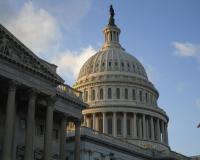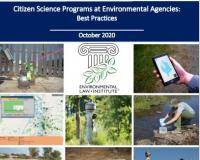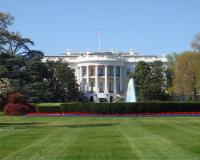
Vibrant Environment
Environmental Justice
All | Biodiversity | Climate Change and Sustainability | Environmental Justice | Governance and Rule of Law | Land Use and Natural Resources | Oceans and Coasts | Pollution Control

President Donald Trump’s policies appear to be at odds with the environmental justice (EJ) movement, but little work has been done to test their true impact. Trump proposed or completed rollbacks of nearly 100 environmental regulations, repeatedly rejected calls for action on climate change, and continuously sought to cut funding for the U.S. Environmental Protection Agency, including for environmental justice. These regressive policies seem likely to harm poor and minority communities most, especially following what many saw as promising progress under President Barack Obama. But how are these policy changes actually impacting the cause of EJ? How can we assess actual progress toward EJ’s multifaceted goals?

Environmental agencies are increasingly transforming their approach to citizen science, from viewing it as a source of data primarily for education and awareness to a potential source of concrete value for their programs. Although this relationship has existed for some time, the emergence of new technologies, an increasingly aware public, and the rise of unexpected pollution events has reinvigorated the way agencies and the public work together.

National Environmental Policy Act (NEPA) administration is in a serious tangle, given new Trump Administration regulations, the long-standing procedures administered by scores of federal agencies, and inconsistent environmental review obligations depending on various dates. This knot, like the legendary knot of King Gordias, is not easily unraveled. But it is not impossible.

Earlier this year, the Environmental Law Institute hosted a webinar on cultural fire management—just prior to yet another devastating fire season across the West Coast of the United States. The discussion highlighted the millennia of Indigenous peoples’ sustainable forest management practices, drawing a sharp contrast with the consequences of over a century of federal fire-suppression policy, now exacerbated by climate change. That discussion now prompts a deeper conversation about options available to Indigenous tribes for regaining their stewardship role over forest resources on their traditional lands.

The principles of climate justice state that those who are least responsible for greenhouse gas emissions, both globally and in the United States, are the ones most affected by the adverse effects of climate change. In this month’s issue of ELR—The Environmental Law Reporter, environmental justice pioneer Barry Hill examines a variety of legal doctrines that states can use to litigate fossil fuel companies to address climate injustices, using Rhode Island v. Chevron Corp. as a model.

It’s easy to grow numb in the face of the parade of problems our country has been experiencing, but news of the Trump Administration’s recent decision to defund diversity training across the federal government and to try to prevent federal contractors and grantees from engaging in such training jolted me with the force of a defibrillator. It is shocking that in the midst of a period of the worst racial unrest in many decades, this is what the Administration is bringing forward.

As the country wrestles with racial justice issues, driven both by police atrocities and the uneven distribution of COVID-19 infection and deaths, it’s time for renewed focus on environmental justice. The quest for EJ remains perhaps the most challenging unsolved problem in the environmental arena. And until we arrive at a place where environmental benefits and burdens are both more equally distributed across society, EJ will remain a problem that differentially compromises not only quality of life, but also health and resilience in the face of maladies like the coronavirus.

Acting in response to Executive Order No. 13807, Establishing Discipline and Accountability in the Environmental Review and Permitting Process for Infrastructure, the Council on Environmental Quality (CEQ) rewrote the governmentwide regulations implementing the National Environmental Policy Act (NEPA) this year. CEQ published its proposal to substantially amend the NEPA rule on January 10, 2020, and published its final rule on July 16, 2020 (85 Fed. Reg. 43304). The new rule becomes effective today, September 14, 2020, and CEQ added language to the final rule to provide that it will apply directly to federal agency actions and preempt all “inconsistent” agency procedures as of that date.

Numerous studies have shown that Black and Latinx communities in the United States face higher hospitalization and mortality rates from COVID-19 and are disproportionately harmed by the virus. While many cite comorbidities and underlying health issues as the reasons for this disparity, the root of this problem is systemic racism. Recent research has found that social determinants like access to healthcare, employment, and clean air and water are the true inequities that have made COVID-19 deadliest for communities of color.

We have the solutions we need to build an equitable and just climate resilient future. Over the past year, coalitions of frontline environmental groups, labor organizations, tribal groups, and other mission-driven organizations in the United States have developed and published comprehensive policy platforms to address the climate crisis. These platforms outline federal, local, and state policy for building resilience and transitioning to renewable and regenerative economies.